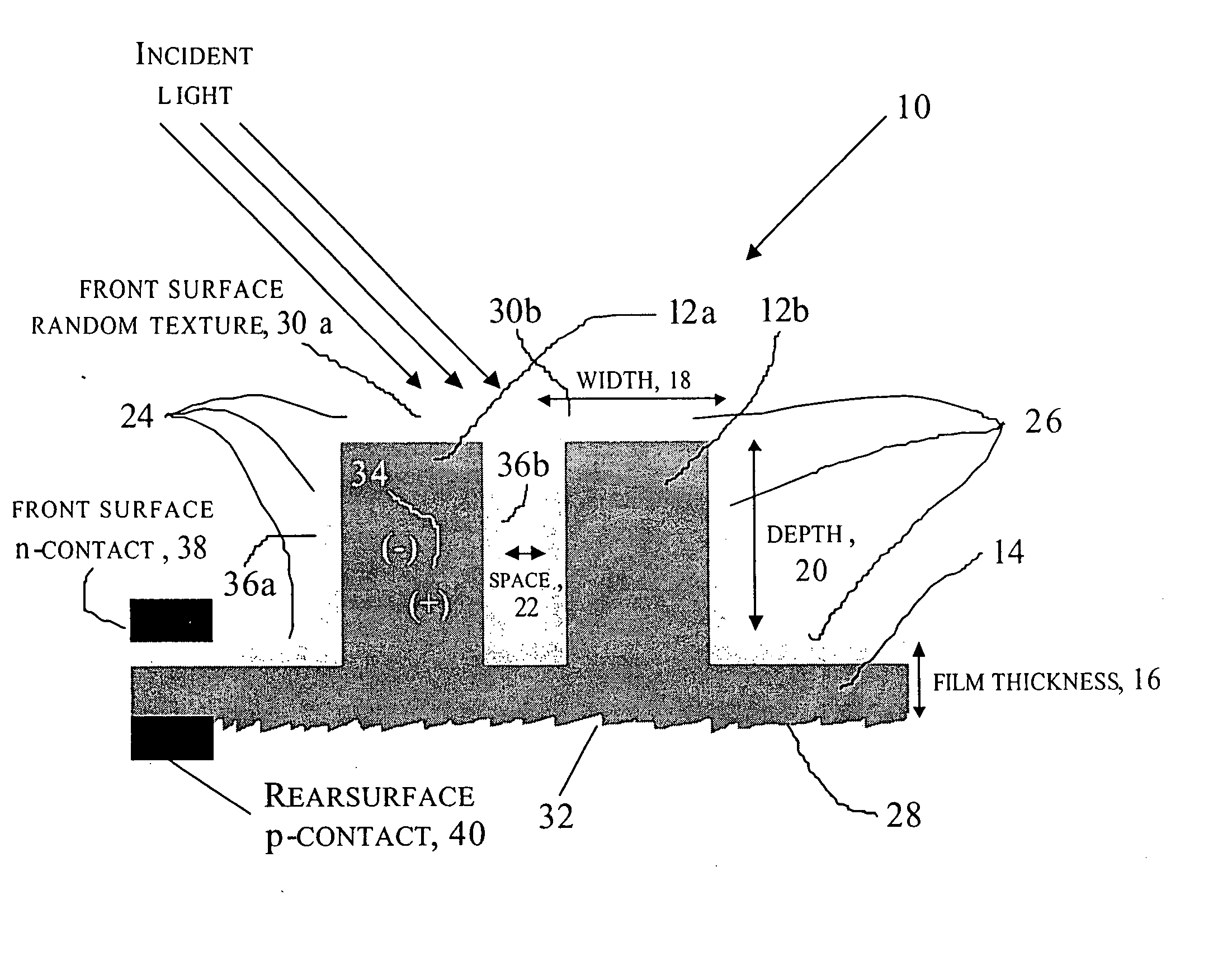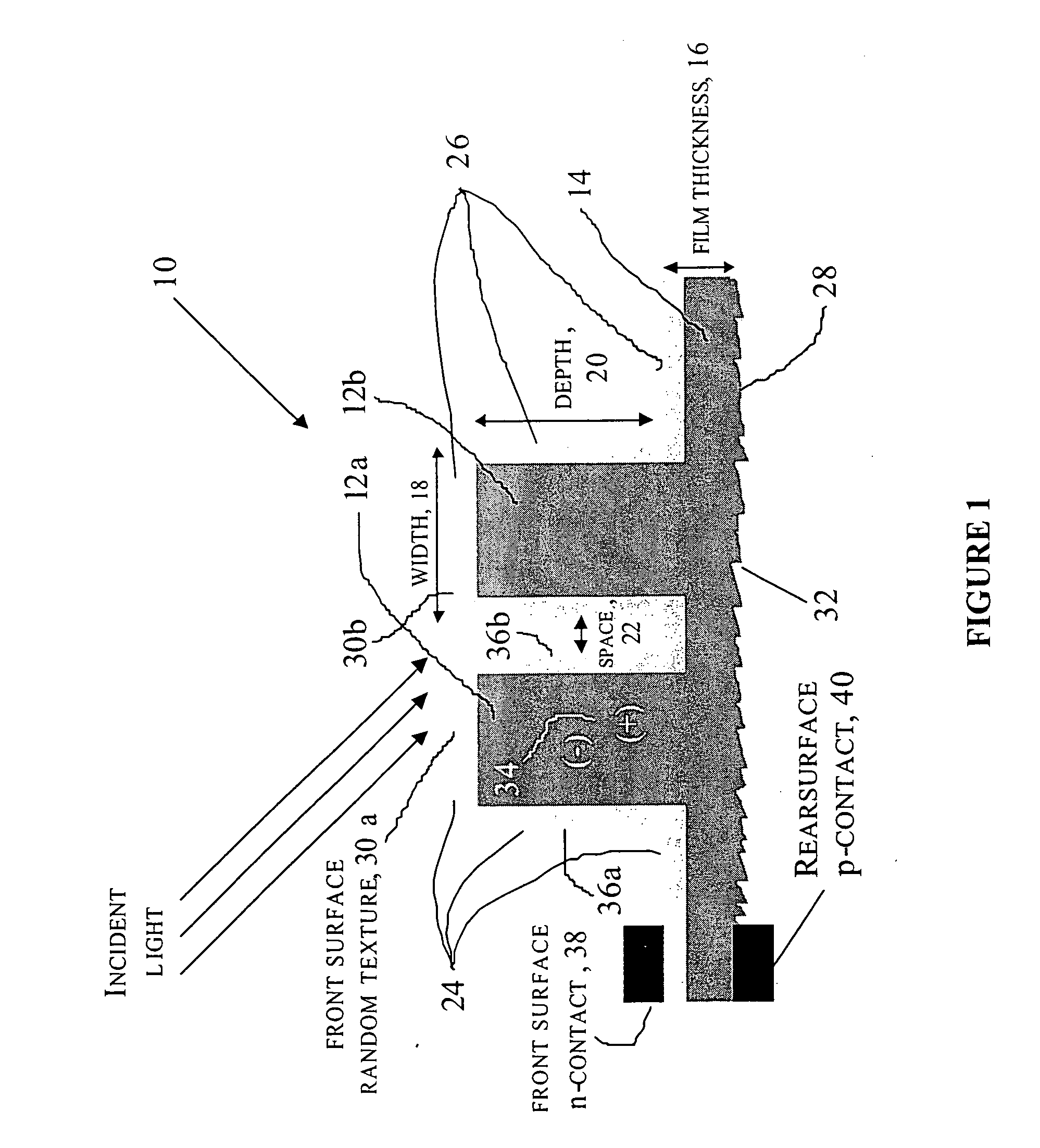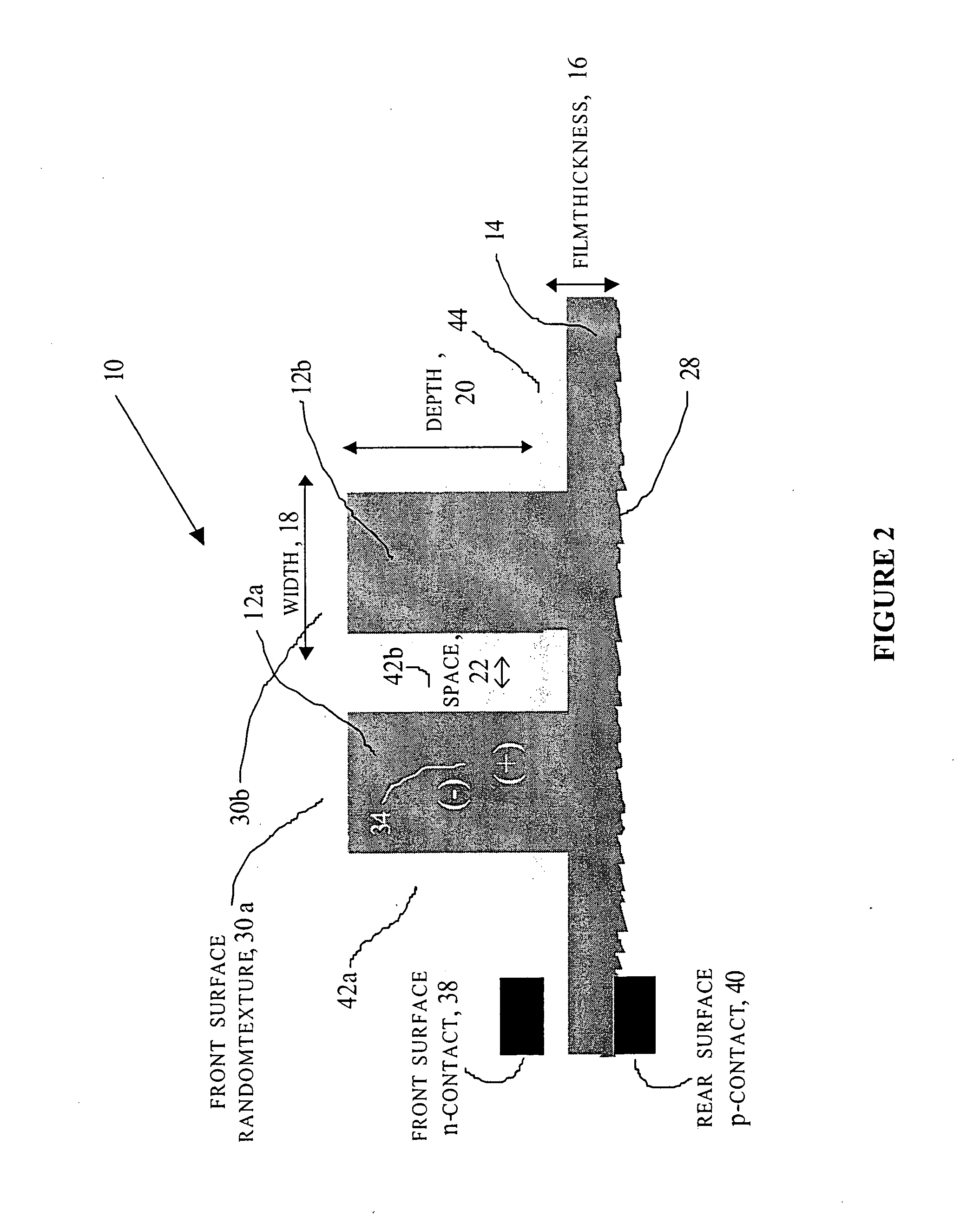Thin-film solar cells and photodetectors having enhanced optical absorption and radiation tolerance
a solar cell and film technology, applied in the field of solar cells and photodetectors, can solve the problems of limited application of texturing schemes to thin wafers and films (20-50 m), inability to achieve comparable improvements in silicon solar cells for use in space environments, and loss of significant market share to compound semiconductor multi-junction solar cell technology. achieve enhanced ionizing radiation tolerance, enhanced optical absorption, and enhanced ir respons
- Summary
- Abstract
- Description
- Claims
- Application Information
AI Technical Summary
Benefits of technology
Problems solved by technology
Method used
Image
Examples
Embodiment Construction
[0047] Briefly, the present invention includes the use of subwavelength random and periodic microscopic structures for enhancing light absorption and immunity to ionizing radiation damage of thin-film solar cells and photodetectors, hereinafter being referred to as photovoltaic devices. Front surface random and periodic microscopic structures can be classified either as diffractive or waveguide elements. Diffractive front surface microscopic structures scatter light into oblique propagating higher diffraction orders that are effectively trapped within periodic surface features etched through the majority of the thin film. The microscopic periodic surface features further enhance absorption by acting as light waveguides perpendicular to the solar cell surface. Typically, the photovoltaic devices of the present invention have dimensions as follows: thin film thickness is between 15 μm and 50 μm, and the plurality of surface features each have a chosen width between 1 μm and 50 μm, a d...
PUM
 Login to View More
Login to View More Abstract
Description
Claims
Application Information
 Login to View More
Login to View More - R&D
- Intellectual Property
- Life Sciences
- Materials
- Tech Scout
- Unparalleled Data Quality
- Higher Quality Content
- 60% Fewer Hallucinations
Browse by: Latest US Patents, China's latest patents, Technical Efficacy Thesaurus, Application Domain, Technology Topic, Popular Technical Reports.
© 2025 PatSnap. All rights reserved.Legal|Privacy policy|Modern Slavery Act Transparency Statement|Sitemap|About US| Contact US: help@patsnap.com



